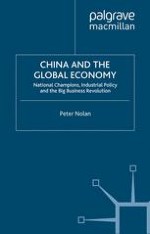2001 | Buch
Über dieses Buch
This book tells the story of China's emergence as a major economic power and the huge impact this will have on world business. Over the last five years Peter Nolan has conducted a major investigation into Chinese industry, its economic structure, and the opportunities for growth in the future. As one of just four world experts invited by the Chinese Government to consult on their application to joint the World Trade Organisation he has worked closely with the heads of Chinese industry and with many foreign multinationals operating in China. China and the Global Economy is an executive summary of the opportunities for business in one of the largest markets in the world, by one passionate about its possibilities for the future.
Anzeige
